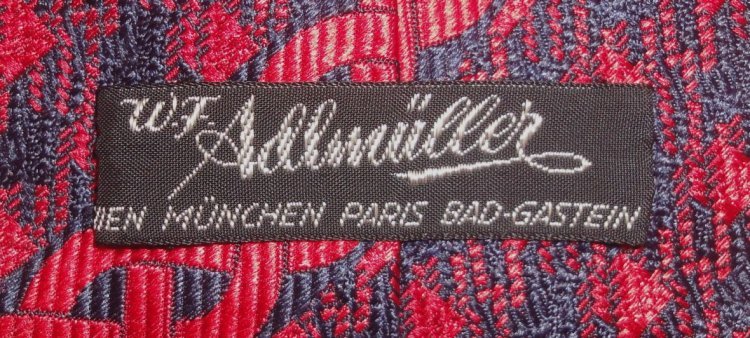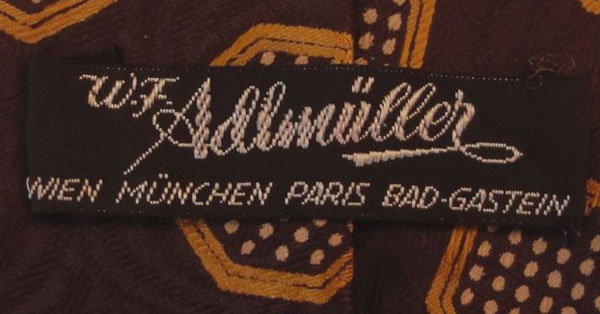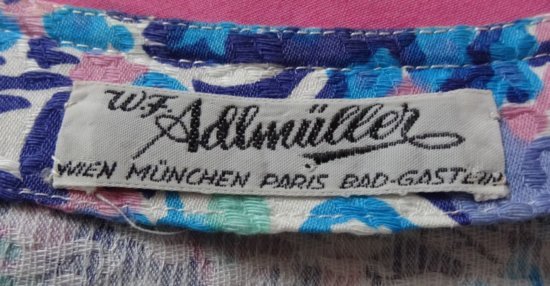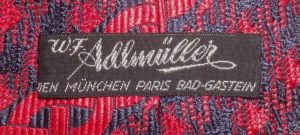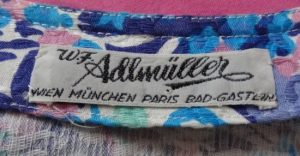W.F. / Fred (Wilhelm Alfred) Adlmüller (1909-1990) was born in Nuremberg, Bavaria, trained as a cook and worked a few years in one of his father’s restaurants. He went to Vienna in 1929 with the purpose to learn more about the restaurant business. Instead, he found a job with the fashion boutique “Ludwig Zwieback & Brüder”, thanks to the costume designer at Vienna’s State Opera, who had recognized his talent. In 1931 he went to work at “Tailors, Stone & Blyth”, another fashion house.
At first he worked in the men’s department, and then started expanding the women’s fashion department, not only using his talent to copy couture designs, but also by designing after his own ideas. He started working on his first couture collection in 1934 and starting in 1936 he also designed costumes for theatre and opera, in Vienna and abroad. Adlmüller didn’t serve in WWII because of his health, but stayed on at the company after the original Jewish owners, Ignaz Sass and his wife, had to leave and a German owner took over. Thanks to his good connections with the Soviets in Vienna, he was able to present his first post-war collection in Autumn 1945, and in 1946 he received Austrian citizenship.
The original owners of Stone & Blyth came back after the war, and first partnered with him as “Stone & Blyth Nachfolger”. Later Adlmüller bought them out and started his own company in 1950. From the late 1940s he also designed costumes for Austrian movies. His salon remained located where Stone & Blyth had already been – at Palais Esterhazy on Kärtnerstrasse 41 in Vienna. From the 1930s until 1973 there was also a boutique in Bad Gastein and, from after the war until 1973, one in Munich.
A perfume, “Eau de Vienne”, was launched in the 1950s. In 1958 he won a prize for the best hostess uniform at the Expo in Brussels. Fred Adlmüller’s fashion was classic couture, often evening wear, worn by stars, presidents’ wives and even royalty. He also made the tailcoats for all the Austrian presidents. He was a professor at the university of applied arts from 1973 to 1979, teaching the fashion master class. In 1985 he sold the main part of his business to the lingerie company Palmers.
Adlmüller died in Vienna in 1990 and is buried at Vienna’s Zentralfriedhof. The last of his creations were auctioned off in January 1991 at Dorotheum in Vienna, and the salon on Kärtnerstrasse continued on until 2002 under the ownership of Palmers.
Written by midge
